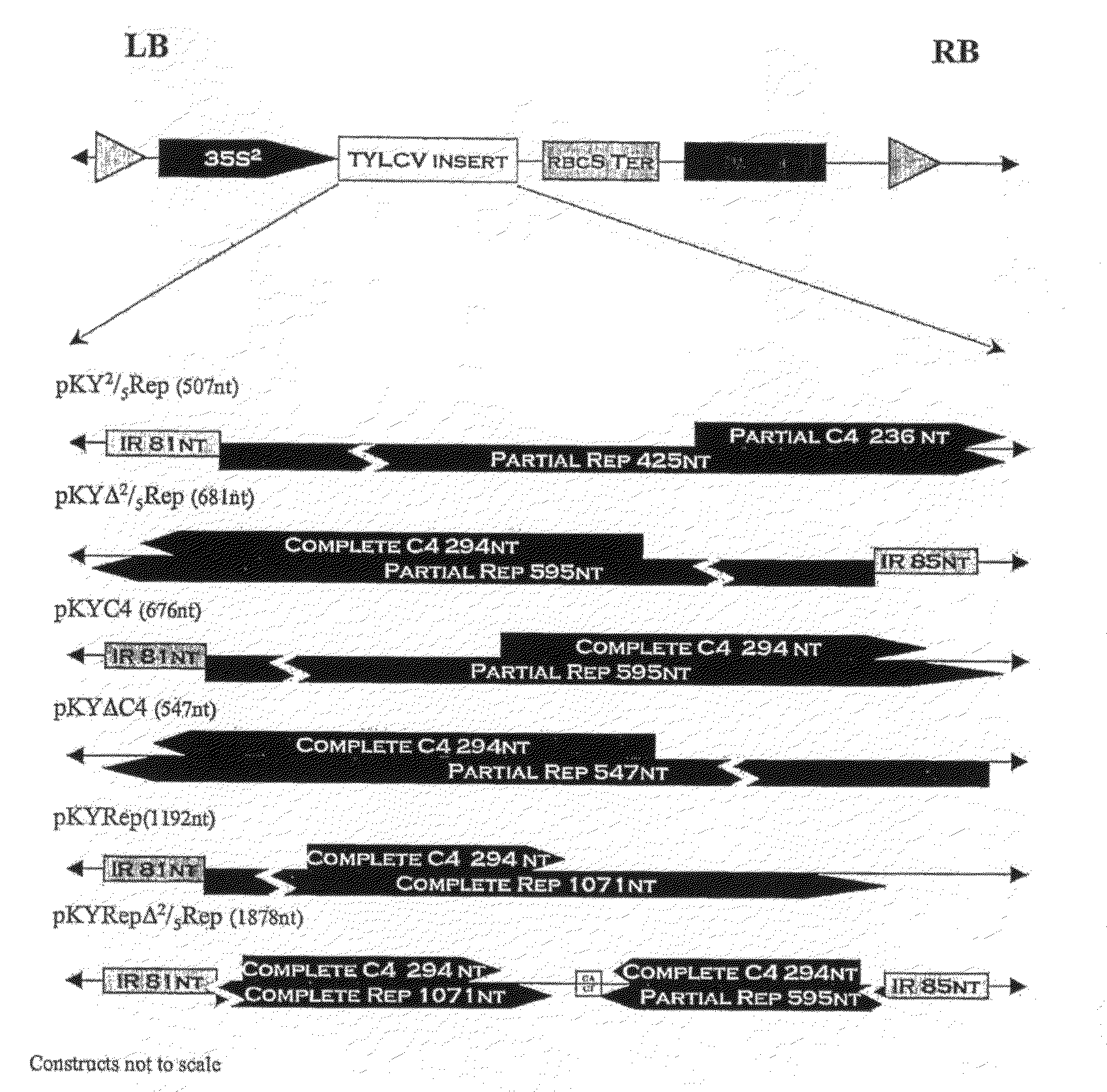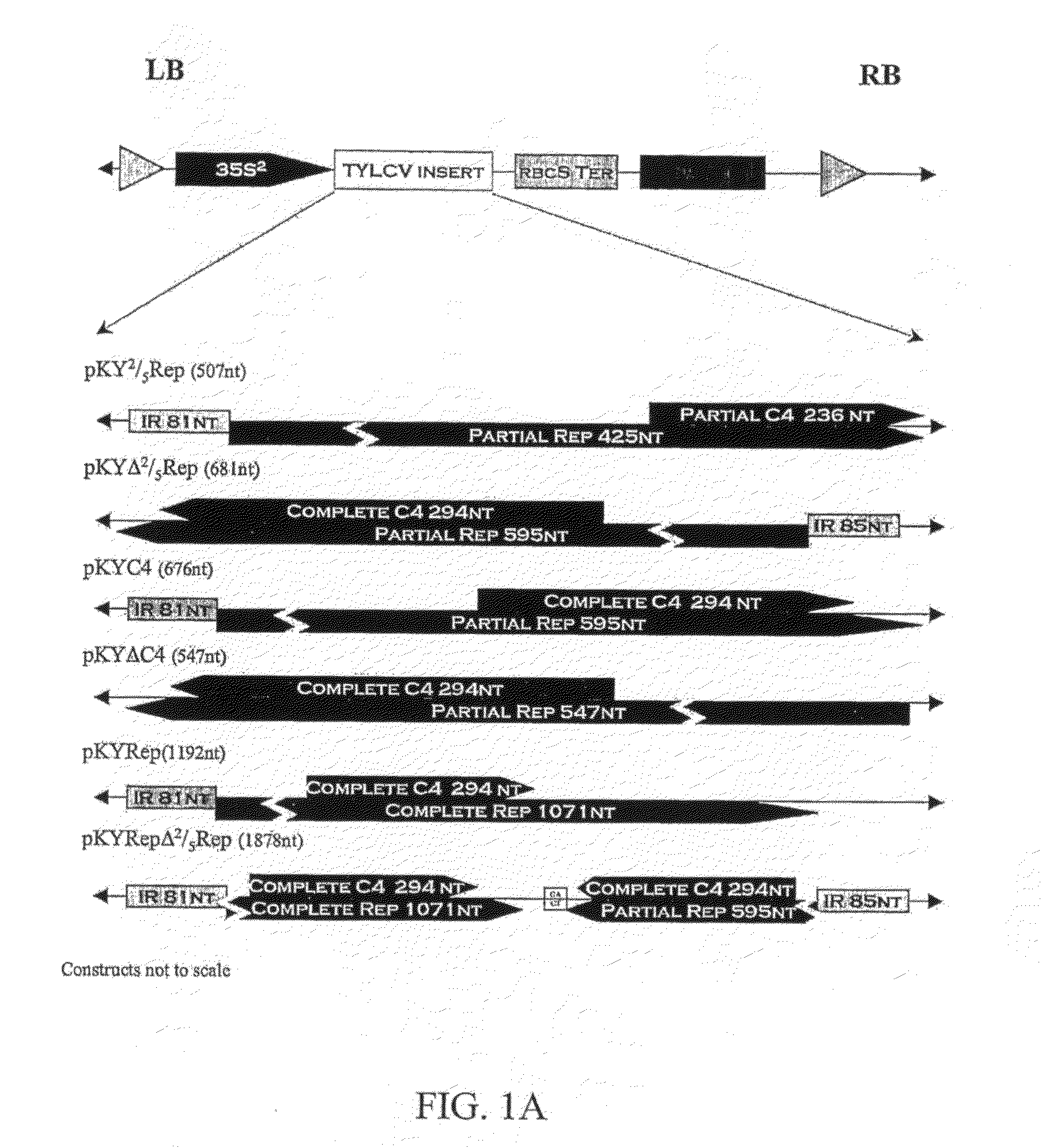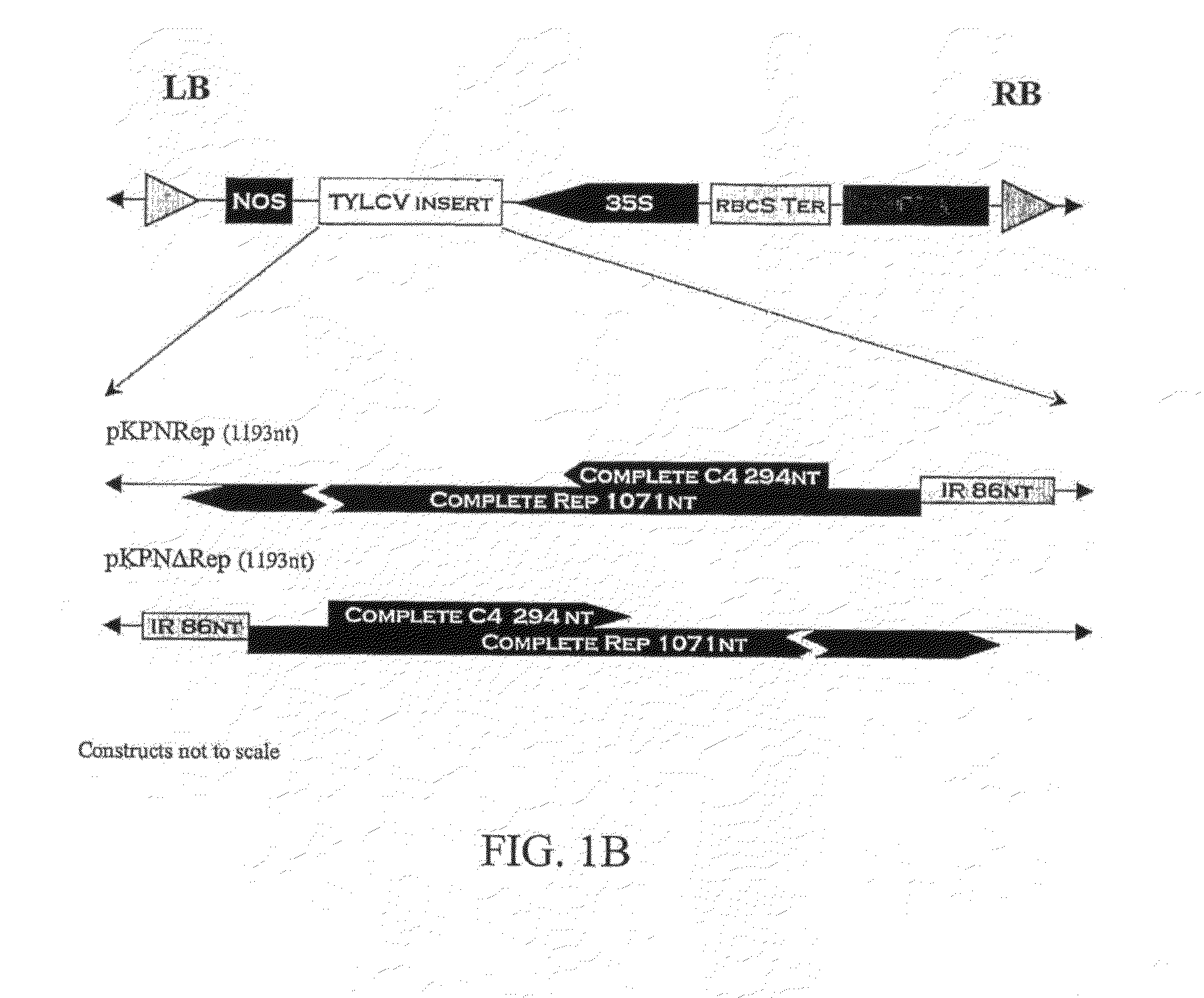Materials and methods for engineering resistance to tomato yellow leaf curl virus (tylcv) in plants,
a technology of yellow leaf curl and engineering resistance, which is applied in the field of materials and methods for engineering resistance to tomato yellow leaf curl virus (tylcv) in plants, can solve the problems of difficult management of tylcv in tomato production, difficult to find and develop host resistance to tylcv, and often unsatisfactory resistance, so as to achieve the effect of maintaining acceptable phenotypic characteristics of plants and broad resistance to tomato yellow leaf curl
- Summary
- Abstract
- Description
- Claims
- Application Information
AI Technical Summary
Benefits of technology
Problems solved by technology
Method used
Image
Examples
example 1
R0 Generation Plants
[0092]Plants transformed with all eight constructs were obtained (FIG. 1) but the number of viable (seed-bearing) transformants for each construct varied (Table 3). Plants transformed with the C4 construct had a highly altered phenotype with greatly reduced lateral growth and flowers growing from the main stem. No viable transformants were obtained with this construct. The R1-generation progeny of all viable R0 plants were evaluated with the exception of R0 plants containing the 2 / 5Rep transgene. Because of the large number of R0 2 / 5Rep plants, only the progenies of 34 out of 46 lines were evaluated (Table 4).
example 2
Greenhouse Evaluation of R1 Generation Plants
[0093]An average of 15 plants in each R1-generation line were evaluated for resistance to TYLCV (Table 4). The transgene was transferred to the next generation in a majority of the R1-generation lines, with the exception of the Rep and NΔRep, where only one line of each had transformed plants. The majority of the R1-generation lines transgenic for either the 2 / 5Rep (21 / 31) or the Δ2 / 5Rep (15 / 19) had plants with no symptoms of TYLCV (FIG. 2). For the RepΔ2 / 5Rep transgene, only 3 / 10 R1 lines were symptomless. No TYLCV DNA could be detected by either spot hybridization or PCR in symptomless plants. These plants had normal phenotypes. No resistant plants were observed in R1-generation lines transformed with ΔC4, Rep, NRep, or NΔRep.
[0094]The resistance obtained using the 2 / 5Rep, Δ2 / 5Rep, and the RepΔ2 / 5Rep constructs varied in frequency among the lines transformed with the same construct (Table 4). There was a significant amount of segregatio...
examples 3
Field Evaluation of R2 Generation Plants
[0096]R2-generation plants from 13, 5, and 2 R1-generation plants transformed with 2 / 5Rep, Δ2 / 5Rep, and the RepΔ2 / 5Rep transgenes, respectively, were evaluated for resistance to TYLCV under field conditions. Non-transformed plants were 100% infected with TYLCV by 4 weeks after the end of the inoculation access period. R2-generation plants were considered resistant when they showed no symptoms of TYLCV infection, tested negative for TYLCV DNA by nucleic acid hybridization at 4, 8, and 12 weeks after the inoculation period, and tested negative for TYLCV DNA by PCR at 12 weeks after the inoculation period. Resistant plants (FIG. 3) were detected in all lines evaluated. As expected, plants in this generation were still segregating for resistance. The frequency of resistant plants varied among R2-generation lines transformed with the same construct (Table 5). The highest frequency of resistance, 80%, was observed in a line transformed with 2 / 5Rep. ...
PUM
| Property | Measurement | Unit |
|---|---|---|
| resistance | aaaaa | aaaaa |
| pressure | aaaaa | aaaaa |
| pathogen-derived resistance | aaaaa | aaaaa |
Abstract
Description
Claims
Application Information
 Login to View More
Login to View More - R&D
- Intellectual Property
- Life Sciences
- Materials
- Tech Scout
- Unparalleled Data Quality
- Higher Quality Content
- 60% Fewer Hallucinations
Browse by: Latest US Patents, China's latest patents, Technical Efficacy Thesaurus, Application Domain, Technology Topic, Popular Technical Reports.
© 2025 PatSnap. All rights reserved.Legal|Privacy policy|Modern Slavery Act Transparency Statement|Sitemap|About US| Contact US: help@patsnap.com



